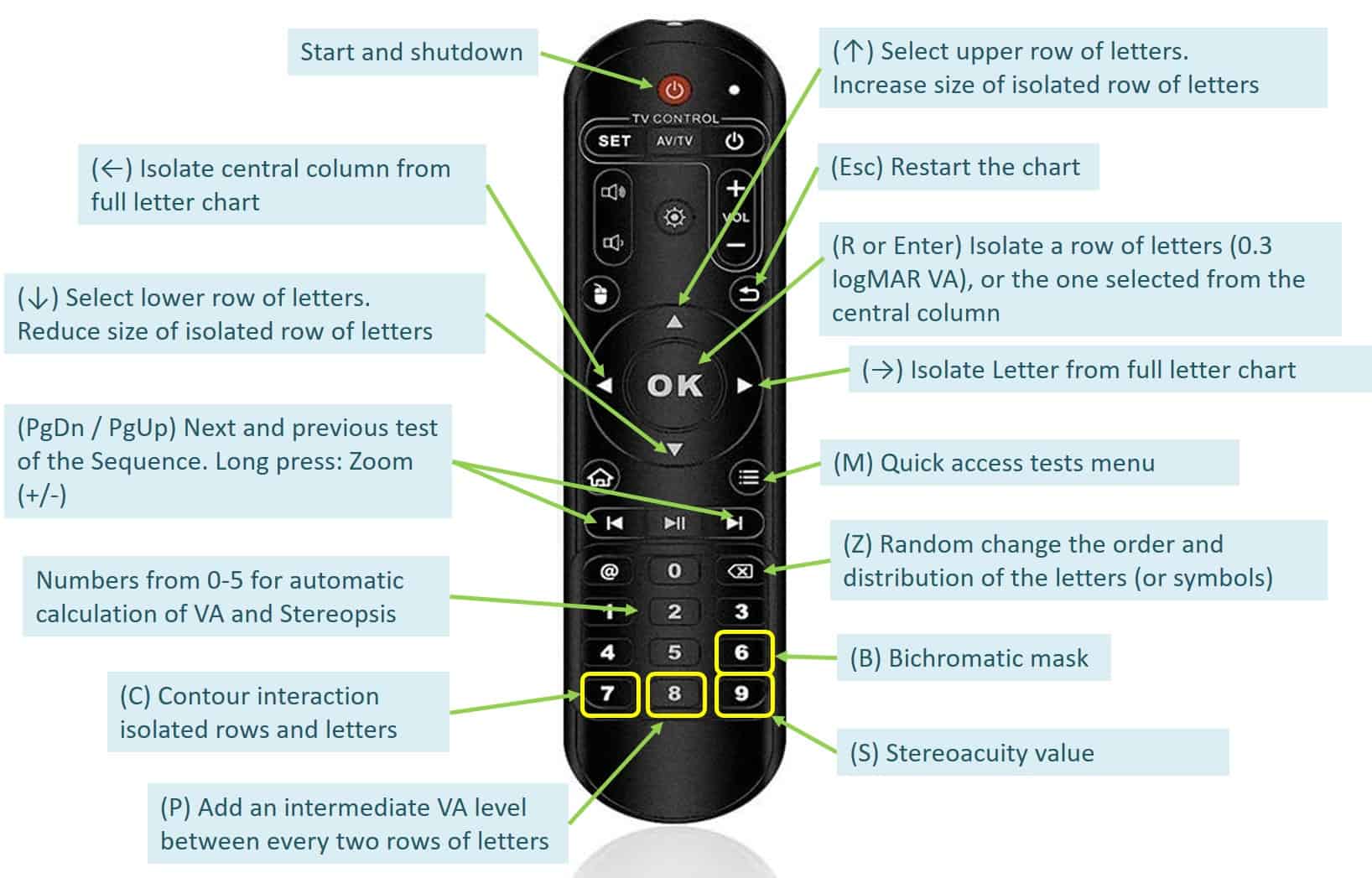Optonet Vision Unit Documentation
1.1.Step 1. Choosing Hardware
The Optonet Vision Unit is compatible with all kinds of digital devices with a sizeable screen (personal computers and tablets) and runs in all regular operating systems, such as Windows, or iOS (Apple).
Sight Testing at Distance
As an introductory offer package*, when subscribing to the Optonet Vision Unit you will receive a free Android mini-PC (similar to the one shown below), to display the tests for distance viewing (Optonet will also send you a mini retro-illuminated keyboard).

This mini-PC can be connected directly to your monitor (cable enclosed). A remote control is also included, and already programmed to control the OVU menus. Below, we indicate what each button is for; and we have put in brackets the computer key that achieves that same function:

You just have to connect the Android TV to any monitor screen’s HDMI port, with the cable provided.
Near Vision
Tablets* are ideal for displaying near vision tests. A minimum size of about 10” and full HD resolution (1920x1200p) are ideal.
The tablet can also be used as a remote controller for distance vision charts:

Orthoptics (Vision Therapy)
Again, orthoptics training can be carried out in any digital device with a sizeable screen that allows a full range of fusional vergence amplitude.
Monitor
Conventional flat computer screens may offer excellent image quality** (see specifications below). Binocular vision tests will require red/green filters, but alternatively, the unit allows displaying the binocular charts on 3D passive screens that require circular polarizing filters (unfortunately, these screens are no longer widely manufactured).

Size: A screen size of around 23” is ideal. A larger or smaller screen will allow displaying a larger or smaller number of letters for lower VAs at once***.
Resolution: Screen resolution must be at least Full HD (1920 x 1080 px), for optimal image sharpness.
Screen technology: IPS technology is highly advisable, specially for enhanced quality of Contrast Sensitivity charts.
Built in speakers: These are recommended (either in the computer or screen), to listen to the beeps produced by the Unit, to signal test changes.
VESA Compliant for monitor wall mounting.
Example of monitor:
https://www.amazon.co.uk/Philips-243V7QDAB-23-8-Inch-Monitor-Speakers/dp/B06XZKTR88/
*A well stablished brand for the tablet is highly advisable to ensure good image quality.
** Televisions are not recommended, since they offer lower image quality for letter charts at much higher cost.

